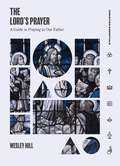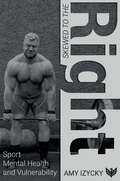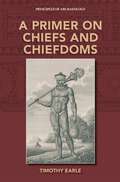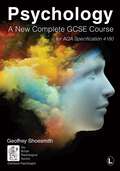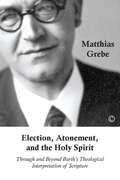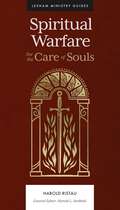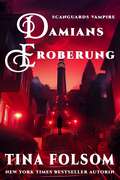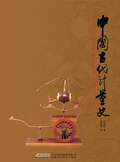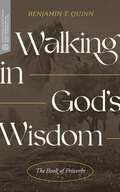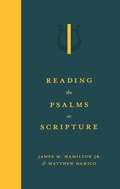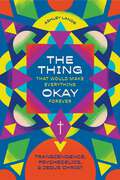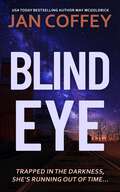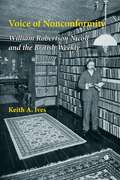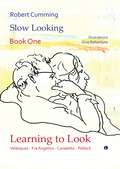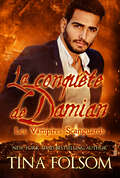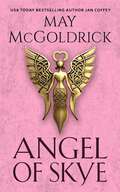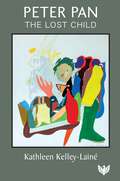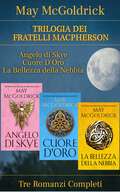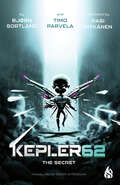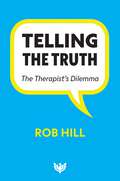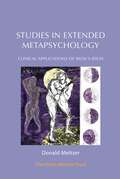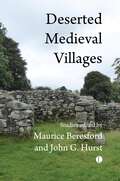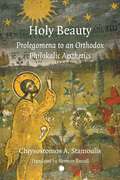- Table View
- List View
Macpherson Brothers Trilogy (Macpherson Series)
by Jan Coffey May McGoldrickUSA Today Bestselling Author Passion…Betrayal…Stolen Love! From the wild shores of the Scotland's Western Isles to the bloody fields of France to the glittering courts of Europe, the Macpherson Trilogy follows a family's fight for Scottish independence against the Tudor king, Henry VIII. The Complete Trilogy in One Volume Angel of Skye Heart of Gold Beauty of the Mist
The Lord's Prayer: A Guide to Praying to Our Father (Christian Essentials)
by Wesley HillYou pray it. But do you understand it? The Lord's Prayer has become so familiar to us that we don't think about what we're praying. It's a portrait of Jesus' heart. And in it Christians from different times, places, and traditions have been united. We pray it, but do we actually believe it? When Jesus taught his followers how to pray, he emphasized how uncomplicated it should be. There's no need for pretense or theatrics. Instead, simply ask for what you need as though you were speaking with your earthly father. This opens a window into Jesus' prayer life and presents us with a portrait of his heart for his followers. Wesley Hill re-introduces the Lord's Prayer. He shows us a God who is delighted to hear prayer. Petition by petition, in conversation with the Christian tradition, he draws out the significance of Jesus' words for prayer today.
Skewed to the Right: Sport, Mental Health and Vulnerability
by Amy IzyckyThe demands of the high-performance athlete are huge, with many celebrated for their achievements, and put on a pedestal for admired personality traits such as discipline, sacrifice, commitment, and focus. This book seeks to explore the celebrated traits of the high-performance athlete and, by doing so, to increase awareness of the vulnerability that such traits also present. Through discussion with professional sports people and presentation of their own personal stories the book explores obsessionality, masochism, and focus, and how these characteristics can enhance performance on the field yet hinder life off it and may even develop into clinically diagnosable mental health difficulties. In psychology, assessments are based on statistical phenomena; the title Skewed to the Right is based on the 'bell curve' that is shown through a graph whereby the majority sit in the middle with a few clusters at either on of the extremes. The suggestion is that elite athletes are 'skewed to the right' on a number of key traits that put them between the 'general' population and those with a clinical diagnosis. The book opens with an exploration of weight-restricted sport and how making weight is achieved through practices that become culturally acceptable in the sporting world yet would be seen to be classified as clinically diagnosable eating disorders in the medical world. It then moves on to personality traits that help and hinder - those skewed to the right: masochism, obsessionality, and focus. Part 3 looks at one trait skewed to the left - acceptance - that many sportspeople struggle with. The book closes with a section exploring points of vulnerability for all athletes and ends with a look at where we can go from here. The aim of the book is to increase social awareness of the reality of life for the successful high-performance athlete and the challenging dynamics that exist in sporting culture today. It will be of interest to psychologists, psychotherapists, trainees, and anyone with an interest in sporting culture.
A Primer on Chiefs and Chiefdoms (Principles of Archaeology)
by Timothy EarleChiefs are political operatives who hold titles of leadership over groups larger than intimate kin-based communities. Although they rule with the consent of their group, they are all about building personal power and respect. Many scholars have viewed chiefs as problem solvers--defending groups against aggressors, resolving disputes, providing support under hardship, organizing labor for community projects, and redistributing goods among those in need. Chiefs do these things, but much of what chiefs do is accumulate benefits for themselves, staying in power and legitimizing control. Anthropological archaeology is well suited to pursue the study of chiefs, their leadership institutions (chiefdoms), and long-term historical processes. The author argues that studying chiefdoms is essential to understanding the role of elemental powers in social evolution. As an illustration, he studies chiefs and their power strategies in historically independent prehistoric and traditional societies and discusses how they continue to exist as powerful actors within modern states.
Psychology: A New Complete GCSE Course: for AQA Specification 4180
by Geoffrey ShoesmithThis book provides simple, clear, in-depth explanations of all the topics in the AQA GCSE specification 4180 syllabus but it will prove invaluable to students at many levels on many courses and to the independent reader. It can be used as a stand-alone home study course, as a classroom text, as a reference text or just for pleasure for those who love to think about what makes people tick. Psychology describes up-to-date research as well as some classic psychology studies and even debunks oneor two psychology research myths. It leads the reader through all the topics in the syllabus as a teacher would in a classroom setting. Topics are presented as a series of lessons followed by Check Your Understanding sections, which are designed to help you check and retain the information in each lesson. An assessment record provided at the end of the book will help you keep track of your progress. Lessons are interactive with many opportunities to jot down your thoughts and reactions, reflect on how a topic relates to your own experience, discuss with other people and become more involved with the material presented. Students can pinpoint the topics they are studying for GCSE by using the table mapping the GCSE specification againstthe lessons in this book. For those studying outside formal classrooms there are guidelines about how best to approach your studies. The book assumes that readers have no previous knowledge of psychology and among the topics covered are: - Conformity and Obedience - would you press a button to kill someone just because you are told to do so? Many people would, it seems. - Sex and Gender - do girls and boys, men and women behave so differently? If so, why? - Memory - how does memory work and how accurate is it? - Non-Verbal Communication - do we reveal our true feelings in our body language? - Development of Personality - what exactly is Anti-Social Personality Disorder? - Prejudice and Discrimination - are we bound to discriminateagainst people who are unlike us? - Learning - how to remove your fear of spiders/snakes/flying/open spaces or anything else using the principles of learning. - Aggression - is aggression born into us? Is it in our hormones? Or do we learn to fight? - Research Methods and the Ethics of Psychology - psychology is based on evidence, not just ideas. But what type of study constitutes good evidence and how should we treat the people in our studies?
Election, Atonement, and the Holy Spirit: Through and Beyond Barth's Theological Interpretation of Scripture
by Matthias GrebeElection, Atonement, and the Holy Spirit' is an examination of the doctrines of election and atonement in Karl Barth's 'Church Dogmatics', taking up Barth's own challenge to his reader to surpass his argument and offer a better typological interpretationof the cultic texts. Barth's radical re-working of Calvin's doctrine of election is one of the most important developments in twentieth-century theology. Christ synthesizes for Barth a particular dialectic: the binary structure of God's Yes of election and God's No of rejection. The book's central question - how can Jesus simultaneously be both the elected and the rejected (CD II/2), acting as both the judge and the judged (CD IV/1)? - is followed by an exploration of the roles of the Holy Spirit and human freedom in God's electing and saving action. Although commentators acknowledge Barth's innovation in this area but also identify problems with his approach, few have offered what David Ford has called a correction 'from within' Barth, using Barth's ownmethod. Using the concept of Existenzstellvertretung, this critique of Barth's exegetical justification for the doctrines offers an alternative exegesis that not only provides this much-needed correction, but also immerses the reader in a fresh engagement with Scripture itself.
Spiritual Warfare: For the Care of Souls (Lexham Ministry Guides)
by Harold RistauJesus Christ is the light that no darkness can overcome. Spiritual warfare isn't always obvious. It's normally not scary or spooky; it's usually rather mundane. Yet it's real and always miraculous. In Spiritual Warfare, Harold Ristau shows how faithful spiritual warfare isn't about secret methods and rituals. Rather, for the care of souls, pastors already have all they need in God's word. The Spirit's gifts equip Christians for whatever challenges await them in ministry—even fighting against the wiles of the devil. Spiritual Warfare helps pastors inform, prepare, and equip the saints for the battle. The good fight is fought in prayer and worship. As the church preaches the forgiveness of sins, the darkness is pierced with the light of Christ and those in bondage are freed.
Damians Eroberung: Scanguards Hybriden - Band 2 (Scanguards Vampire)
by Tina FolsomDie Scanguards-Hybriden-Serie wird mit Damian LeSang, dem ältesten Zwillingssohn von Nina & Amaury (Amaurys Hitzköpfige Rebellin), fortgesetzt. Als Vampir-Hybride, der nicht nur Leibwächter bei Scanguards ist, sondern auch den Nachtclub Mezzanine leitet, hat Damian die Auswahl an schönen Frauen. Doch als die kurvige Journalistin Naomi Sutton in das Büro des Nachtclubs einbricht, während sie Behauptungen über angebliche satanische Blutrituale im Club nachgeht, regt sich Damians Blut wie nie zuvor. Doch wie kann er Naomi davon abhalten, seine Geheimnisse aufzudecken, wenn er nichts mehr will, als sie zu Seiner zu machen? Das Verschwinden eines Barkeepers, eine Verwechslung mit seinem Zwillingsbruder und ein Diebstahl werfen weitere Probleme in Damians Leben auf und könnten ihn dazu zwingen, Naomi die Wahrheit über sich zu offenbaren. Doch kann eine Reporterin ein solches Geheimnis bewahren? Lara Adrian, New York Times Bestseller Autorin der Midnight Breed Serie: "Ich bin süchtig nach Tina Folsoms Büchern! Die Scanguards Serie ist eine der heißesten Sachen, die es bei Vampirliebesromanen gibt. Wenn Sie glühend heiße, sich rasant entwickelnde Romane lieben, dann verpassen Sie diese packende Serie nicht!" Über die Serie Die Scanguards Vampirserie ist voll von rasanter Action, brennenden Liebesszenen, witzigen Dialogen und starken Helden und Heldinnen. Vampir Samson Woodford lebt in San Francisco und besitzt die Sicherheits-/Leibwächterfirma Scanguards, die sowohl Vampire als auch Menschen beschäftigt. Und letztendlich auch einige Hexer. Später in der Serie tauchen auch ein paar unsterbliche Hüter und Dämonen auf. Jedes Buch kann als alleinstehender Roman gelesen werden (keine Cliffhanger) und dreht sich immer um ein neues Paar, das die Liebe findet, aber die Serie macht mehr Spaß, wenn sie chronologisch gelesen wird. Scanguards Vampire Band 1 - Samsons Sterbliche Geliebte Band 2 - Amaurys Hitzköpfige Rebellin Band 3 - Gabriels Gefährtin Band 4 - Yvettes Verzauberung Band 5 - Zanes Erlösung Band 6 - Quinns Unendliche Liebe Band 7 – Olivers Versuchung Band 8 – Thomas' Entscheidung Band 8 1/2 – Ewiger Biss Band 9 – Cains Geheimnis Band 10 – Luthers Rückkehr Band11 – Blakes Versprechen Band 11 1/2 – Schicksalhafter Bund Band 12 – Johns Sehnsucht Novelle – Brennender Wunsch Band 13 – Ryders Rhapsodie Band 14 - Damians Eroberung Band 15 - Graysons Herausforderung Band 16 - Isabelles verboten Liebe Band 17 - Coopers Leidenschaft Band 18 - Vanessas Wagemut Band 19 - Patricks Verführung Hüter der Nacht Band 1 – Geliebter Unsichtbarer Band 2 – Entfesselter Bodyguard Band 3 – Vertrauter Hexer Band 4 – Verbotener Beschützer Band 5 – Verlockender Unsterblicher Band 6 – Übersinnlicher Retter Band 7 – Unwiderstehlicher Dämon Codename Stargate Band 1 - Ace – Auf der Flucht Band 2 - Fox – Unter Feinden Band 3 - Yankee – Untergetaucht Band 4 – Tiger – Auf der Lauer Der Clan der Vampire Der Clan der Vampire (Venedig 1 – 2) Der Clan der Vampire (Venedig 3 – 4) Der Clan der Vampire (Venedig 5) Jenseits des Olymps Band 1 – Göttersturm Band 2 - Göttertraum Band 3 - Götterglanz Band 4 – Götterlust Die Scanguards Vampirserie hat alles: Liebe auf den ersten Blick, von Feinden zum Liebespaar, Alpha-Helden, Leibwächter, Brüderschaft, Jungfrau in Not, Frau in Gefahr, die Schöne und das Biest, verborgene Identität, Seelenverwandte, erste Liebe, Jungfrauen, gequälter Held, Altersunterschied, zweite Liebeschance, trauernder Liebhaber, Rückkehr von Totgeglaubten, heimliches Baby, Playboy, Entführungen, von Freunden zum Liebespaar, Coming-out, heimlicher Verehrer, unerwiderte Liebe, Amnesie, Aristokraten, verbotene Liebe, eineiige Zwillinge, Partner bei der Verbrechensbekämpfung.
The History of Ancient Chinese Measures and Weights
by Qiu GuangmingQiu Guangming, the author of this book, is a researcher on the measuring and weighing systems in China for more thirty years. he has been collecting historical data and examining actual objects, which resulted in in numerous research papers and books. This books examines these systems she has researched.
Walking in God's Wisdom: The Book of Proverbs (Transformative Word)
by Benjamin T. QuinnGet wisdom, get insight (Prov 4:5)The book of Proverbs is an invitation to "get wisdom." But wisdom isn't so easily defined or found. Without discernment, we can be swayed by teachers or sayings that sound wise, but true biblical wisdom is rooted in the fear of the Lord. In Walking with God's Wisdom, Benjamin T. Quinn calls us to hear and obey God's wisdom found in Proverbs. These ancient words reveal a way of life exemplified in Jesus Christ. Quinn shows how even the most ordinary aspects of life are packed with importance for wise living before God.
Reading the Psalms as Scripture
by James M. Hamilton Jr. Matthew DamicoThe psalms cultivate a life of prayer grounded in Scripture. In Reading the Psalms as Scripture, James M. Hamilton Jr. and Matthew Damico guide the reader to delight in the spiritual artistry of the psalms. Psalms is a carefully arranged book saturated in Scripture. The psalmists drew from imagery and themes from earlier Scripture, which are then developed by later Scripture and fulfilled in Christ. The book of psalms advances God's grand story of redemption, and it gives us words to pray by drawing us into this story. When we meditate on the promises and patterns in the psalms, we can read, pray, and sing them with faithfulness.
The Thing That Would Make Everything Okay Forever: Transcendence, Psychedelics, and Jesus Christ
by Ashley LandeFor years, psychedelics were my religion. All I ever wanted was The Thing That Would Make Everything Okay Forever, the panacea, the cure for what plagued me. From those first moments when I tasted the earthy pulp of a psilocybin mushroom, it was love. Psychedelics were my sacrament. They shot me into cathedral vaults. The promise of eternal life through chemicals glittered seductively, but hid a yawning abyss. The Thing That Would Make Everything Okay Forever tells my story of psychedelic devastation and spiritual rescue. It chronicles my trajectory from acid enthusiast to soul-weary druggie to psychedelic refugee. I finally found The Thing That Would Make Everything Okay Forever—in the last place I thought to look.
Blind Eye
by Jan Coffey May McGoldrickTRAPPED IN THE DARKNESS, SHE'S RUNNING OUT OF TIME.... Counting down to Chernobyl-scale disaster THE CLOCK STARTS NOW… Tick… Scientist Marion Kagan is the sole survivor after gunmen attack the facility where her team was working on a top-secret project. Wounded and trapped in a collapsed building, Marion must stop radioactive test samples from leaking out and killing millions. …tick… In a Connecticut psychiatric hospital, Marion's twin sister, who has been in a comalike state for years, begins to thrash violently in her bed. When an experimental program is used on her to read the images of her brain, researchers are shocked at what they find. …tick… An American soldier just back from Iraq is searching for direction in his life. While he watches the news about the research facility explosion, he is unaware that fate has just chosen a direction for him—straight into a deadly game of international corporate intrigue.
Voice of Nonconformity: William Robertson Nicoll and The British Weekly
by Keith A IvesA study of William Robertson Nicoll, a non-conformist individual who had considerable influence in the late 19th Century. Originally a minister, he was considered a great leader and was also a theological conservative, and therefore committed to maintaining the orthodox stance of the Christian Churches, but at the same time, he encouraged many of the new ideas, which he felt would prove a useful and hopeful benefit for the Church. Due to health issues he was later forced to retire his position and focused on work as an editor and journalist, bringing with him the same sense of leadership he had previously been known for. The debate over his legacy continues and is addressed within this study using previously unstudied information on Nicoll's life.
Slow Looking: Book One: Learning to Look
by Robert CummingSlow Looking can lead to unexpected and huge rewards. In Book One - Learning to Look Robert Cumming shares his own slow discovery of the pleasures of looking and aesthetic experience, and in so doing encourages you to explore art through your own eyes. He takes you to Madrid to explore Velazquez's Las Meninas, travels with you to Cortona in Tuscany to look at a Fra Angelico altarpiece, takes you to St Petersburg to immerse yourself in Canaletto's Venice, and examines with you the minute details of a Jackson Pollock in New York. You will have your eyes truly opened by this artistic odyssey with Robert as your fellow traveller. With illustrations by the artist Gino Ballantyne, Slow Looking - Book One is the start of an eye-opening adventure. In Book Two - Continuing to Look Robert and Gino continue the journey by casting fresh eyes on the Mona Lisa and paintings by Brueghel, Matisse, Turner, Constable, Poussin and Manet. Book Three - Seeing is Believing concludes with Rembrandt, Picasso, Rubens, Degas, Sir Luke Fildes and Bridget Riley.
La conquête de Damian (Les Vampires Scanguards)
by Tina FolsomEn tant que vampire hybride qui travaille non seulement comme garde du corps pour Scanguards, mais aussi à la boîte de nuit Mezzanine, propriété de son père et de Samson, Damian a l'embarras du choix en matière de jolies femmes. Mais lorsque Naomi Sutton, une journaliste aux formes généreuses, s'introduit dans le bureau de la boîte de nuit alors qu'elle enquête sur des allégations de prétendus rituels sanguins dans le club, le sang de Damian s'agite comme il ne l'a jamais fait auparavant. Mais comment peut-il empêcher Naomi de déterrer ses secrets alors qu'il ne veut rien d'autre que lui faire l'amour et planter ses crocs dans son joli cou ? La disparition d'un barman, une embrouille avec son frère jumeau et un vol jettent un trouble dans la vie de Damian et pourraient l'obliger à dire à Naomi la vérité sur lui-même. Mais une journaliste peut-elle garder un tel secret ? À PROPOS DE LA SÉRIE La série Scanguards Vampires est pleine d'action rapide, de scènes d'amour torrides, de dialogues pleins d'esprit et de héros et héroïnes forts. Le vampire Samson Woodford vit à San Francisco et possède une société de sécurité et de garde du corps, Scanguards, qui emploie à la fois des vampires et des humains. Et éventuellement des sorcières. Ajoutez quelques gardiens immortels et quelques démons plus tard dans la série, et vous aurez compris ! Chaque livre peut être lu seul et est toujours centré sur un nouveau couple qui trouve l'amour, mais la série est plus agréable lorsqu'elle est lue dans l'ordre. Et bien sûr, il y a toujours quelques blagues - vous comprendrez quand vous rencontrerez Wesley, un aspirant sorcier. Bonne lecture ! ⭐️ ⭐️ ⭐️ ⭐️ Lara Adrian, auteure de la série Midnight Breed, vendue dans le New York Times : "Je suis accro aux livres de Tina Folsom ! La série des Scanguards® est l'une des choses les plus chaudes qui soient arrivées à la romance vampirique. Si vous aimez les lectures torrides et rapides, ne manquez pas cette série palpitante !" Les Vampires Scanguards La belle mortelle de Samson (#1) La provocatrice d'Amaury (#2) La partenaire de Gabriel (#3) L'enchantement d'Yvette (#4) La rédemption de Zane (#5) L'éternel amour de Quinn (#6) Les désirs d'Oliver (#7) Le choix de Thomas (#8) Discrète morsure (#8 ½) L'identité de Cain (#9) Le retour de Luther (#10) La promesse de Blake (#11) Fatidiques Retrouvailles (#11 ½) L'espoir de John (#12) La tempête de Ryder (#13) La conquête de Damian (#14) Le défi de Grayson (#15) L'amour interdit d'Isabelle (#16) La passion de Cooper (#17) Le courage de Vanessa (#18) Gardiens de la Nuit Amant Révélé (#1) Maître Affranchi (#2) Guerrier Bouleversé (#3) Gardien Rebelle (#4) Immortel Dévoilé (#5) Protecteur Sans Égal (#6) Démon Libéré (#7) Le club des éternels célibataires Séduisant (#1) Attirant (#2) Envoûtant (#3) Torride (#4) Attrayant (#5) Passionné (#6) Hors d'Olympe Une Touche de Grec (#1) Un Parfum de Grec (#2) Un Goût de Grec (#3) Un Souffle de Grec (#4) Les Vampires de Venise Nouvelle 1 : Raphael & Isabella Nouvelle 2 : Dante & Viola Nouvelle 3 : Lorenzo & Bianca Nouvelle 4 : Nico & Oriana Nouvelle 5 : Marcello & Jane Nom de Code Stargate Ace en Fuite (#1) Fox en Vue (#2) Yankee dans le Vent (#3) Tiger à l'Affût (#4) Hawk en Chasse (#5) La Quête du Temps Changement de Sort (#1) Présage du Destin (#2) Thriller Témoin Oculaire La série des vampires Scanguards a tout pour plaire : coup de foudre, ennemis à amants, rencontre mignonne, instalove, héros alpha, compagnons de destin, garde du corps, bande de frères, demoiselle en détresse, femme en péril, la beauté et la bête, identité cachée, âmes sœurs, premier amour, vierges
Angel of Skye (Macpherson Series)
by Jan Coffey May McGoldrickThe Macpherson Saga Begins... Winner of the Holt Medallion for Best Historical Romance From the untamed shores of Scotland's Western Isles to the brutal battlefields of France and the opulent courts of Europe, the Macpherson Trilogy embarks on a riveting journey through a family's quest for Scottish independence against the formidable Tudor king, Henry VIII. Unveil the Hidden Flames... Fiona does not remember the years before she came to the priory on the Isle of Skye. Only the compassionate Prioress holds the key to the spirited redhead's true lineage. Cloaked in a humble cowl and simple peasant's dress, Fiona emerges from the island's mist to confront Alec Macpherson, the renowned warrior chief of the Highlands. Love as a Shield... Alec has served King James with his sword. Now he would give his very soul to safeguard this enchanting girl from the intricate web of intrigue that threatens her. Fiona needs not only protection, but also Alec's love, and he willingly surrenders it. Yet, the king's adversaries are maneuvering Fiona towards a perilous trap, for her memories harbor the face of her mother's murderer and a secret potent enough to shake the Scottish throne. A Battle of Hearts and Honor... In a gripping clash between Highland strength and a foe's ruthless ambitions, Alec and Fiona must navigate through blood and warfare to determine the ultimate victor—whether it be the might of an army or the unyielding passions that bind two lovers. Before it is over, the stars align in an epic tale where love is a force as formidable as any armed legion...
Peter Pan, the Lost Child
by Kathleen Kelley-LaineOriginally published in 1992 in French as Peter Pan ou l'Enfant Triste, the book was translated into English in 1997 and released as Peter Pan: The Story of Lost Childhood. This new English language version is translated by author Kathleen Kelley-Laine and enriched with the addition of an epilogue from the author plus a new foreword from renowned psychoanalyst Jonathan Sklar. Peter Pan, "young innocent and heartless", with his baby tooth smile is one of the most popular heroes of fiction of both children and adults for over one hundred years. The author explores this mythical figure, both as a story as well as a metaphor, revealing the hidden traumas and psychological conundrums of this "Lost Child". The evocative and lyrical style takes the reader through multiple levels of understanding of this seemingly simple "fairy tale", into the tragic story of its author J. M. Barrie and of other Peter Pans who never grow up. In Peter Pan, the Lost Child, psychoanalyst Kathleen Kelley-Laine explores Peter Pan's light-hearted escapades and uncovers a sad, lost child behind the 'baby tooth' smile. She uses the story as a framework for the stories of her patients to show how their own Peter Pan manifests, giving a unique insight into how childhood events can block growth into adulthood. She also investigates the sinister side of author James Mathew Barrie as it relates to his Peter Pan tale, and addresses her own family history and its links to The Boy Who Would Not Grow Up. Little by little, as the book progresses, Kelley-Laine's lost childhood emerges as a child who fled with her family from war-torn Hungary after the Second World War to the 'promised land' of Canada. These three interwoven storylines take the reader on a literary journey to uncover secrets and hidden emotions. Kelley-Laine makes clear that the child who cannot grow up, the Peter Pan raging inside the adult, needs to be heard and understood. Only then can that lost child have a chance to find the road to maturity.
Trilogia dei Fratelli Macpherson: La trilogia completa in un unico volume (Serie della Famiglia Macpherson)
by Jan Coffey May McGoldrickPassione... Tradimento... Amore rubato! Dalle coste selvagge delle isole occidentali della Scozia ai campi insanguinati della Francia fino alle corti scintillanti d'Europa, la Trilogia dei Macpherson segue la lotta di una famiglia per l'indipendenza scozzese contro il re dei Tudor, Enrico VIII. La trilogia completa in un unico volume Angelo di Skye Cuore D'Oro La Bellezza della Nebbia
Kepler62 #6: The Secret (Kepler62)
by Bjørn Sortland Timo ParveloAfter reaching the distant Kepler62 planet, Ari, Joni, and all the others at the basecamp is consumed by panic. The weapons cabinet is empty and the virus antidotes have gone missing. It's clear that the mysterious extra passenger is to blame, but who is it? It's not long before the children find out that they've been used as nothing but a means to an end. Now they must take flight and fight for their survival. Just as all seems lost, a surprise hero emerges with an army in tow.
Hayalperest (Highland Hazinesi Üçlemesi)
by Jan Coffey May McGoldrickMay McGoldrick'in Hayalperest ile başlayan Highland Hazinesi Üçlemesi , üç İskoç kız kardeşin hayatlarını ve aşklarını konu alıyor. Percy kardeşlerin her biri ailelerinin hazinesine dair bir ipucuna – ve üç İskoçyalı savaşçının kalplerinin anahtarına sahiptir... Merhum babası krala ihanetle suçlandığında, Catherine Percy İskoçya'da bir sığınak buldu. Ancak yanlış bir kimlik vakası, onu korumaya yeminli İskoç kontuyla uzlaşmacı bir duruma soktu. Onunla evlenmesi itibarını kurtardı ama hiçbir şey onu, bedenini onun iradesine boyun eğdiren tutkudan kurtaramazdı... ve son savunmasını da paramparça etti! HAYALPEREST hakkında... "MUTLAK BIR HAZINE! Bu kitabı kesinlikle çok seviyorum. İkinci kez okumayı yeni bitirdim; ancak ilk seferinde neden incelemediğimi söyleyemem. Her halükarda, bu kitap inanılmaz. Olay örgüsü ve karakter kadrosu dinamik, ortaya çıkan hikaye ise ilgi çekici." - Online İnceleme
Telling The Truth: The Therapist's Dilemma
by Rob HillHonesty is important in any relationship but within psychotherapy, honesty takes on a different dimension. The impact of speaking the truth has many repercussions to the therapeutic relationship and may harm the perception of the therapist in the eyes of the client or the relationship in its entirety. Thus, what are the limits of what a therapist can therapeutically share with a client? What are the implications of the therapist choosing to conceal what they congruently experience? Have therapists in the past been more able and more willing to tell the truth with their clients? Rob Hill engages with these and many more questions, which lead into related territories - those of shame, power, love and hate, narcissism, intersubjectivity and madness - and invites the reader to consider them from a fresh perspective. Presented in essay form interspersed with 'stories' which focus on Hill's inner reactions to working with various clients, the book seeks to evoke curiosity and contemplation rather than definitive answers. Using language that is personalised and 'immediate' rather than academic and abstract, Hill hopes to engage all therapists, including those who rarely read academic and research literature. Telling the Truth is an enjoyable, thought-provoking, and accessible read that raises many important ideas. Rob Hill's own honesty, insight, and openness in addressing this important topic makes this essential reading for practising therapists.
Studies in Extended Metapsychology: Clinical Applications of Bion's Ideas
by Donald MeltzerThe work of Wilfred Bion, by its very nature being a major step forward in the psychoanalytical model making of the mental apparatus, will undoubtably require many years for its full assimilation into the thought and practice of workers in the field. To assist this process of assimilation two types of exposition are required: to help students read Bion's work in a comprehending way; and to show the way to the clinical application of this revolutionary modification of the working mosel of the mind.
Deserted Medieval Villages
by Maurice Beresford and John G. HurstDeserted Medieval Villages combines archaeological and historical expertise to produce a comprehensive and detailed analysis of the studies of deserted medieval villages. Including an extensive historical and archaeological review of the surge in mid-20th century research, J.G. Hurst's archaeological gazetteer of 290 sites, and analysis of Scottish, Welsh, and Irish sites, this book is an in-depth reference work. Updating Beresford's classic The Lost Medieval Villages of England, this book refreshes his historical research, considers the economic circumstances of desertion, and includes detailed maps, photographs and tables.
Holy Beauty: Prolegomena to an Orthodox Philokalic Aesthetics
by Chrysostomos A. StamoulisThe philosophical and theological study of aesthetics has a long and rich history, stretching back to Platos identification of ultimate goodness and beauty, together representing the eternal form. Recent trends in aesthetic theory, however, characterised by a focus on the beautiful at the expense of the good, have made it an object of suspicion in the Orthodox Church. In its place, Greek theologians have sought to emphasise philokalia as a truer theological discipline. Seeking to reverse this trend, Chrysostomos Stamoulis brings into conversation a plethora of voices, from Church fathers to contemporary poets, and from a Marxist political theorist to a literary critic. Out of this dialogue, Stamoulis builds a model for the re-appropriation of Orthodoxys patristic and Byzantine past that is no longer defined in antithesis to the Western present. The openness he proposes allows us to perceive afresh the world shot through with divinity, if only we can lift our gaze to see it. Dismantling the false dichotomy, philokalia or aesthetics, is the first step.

